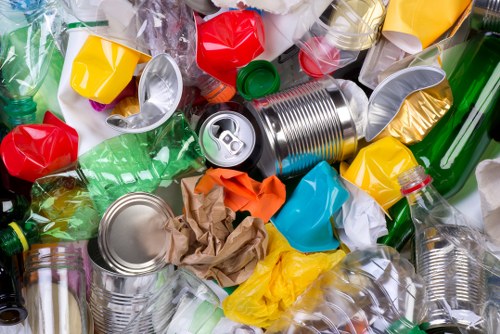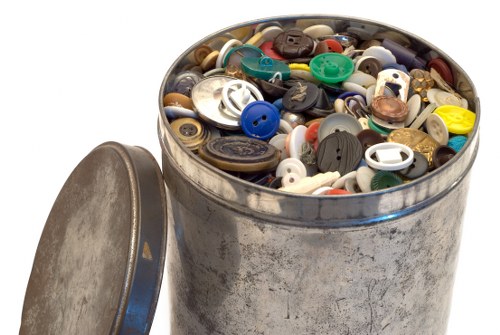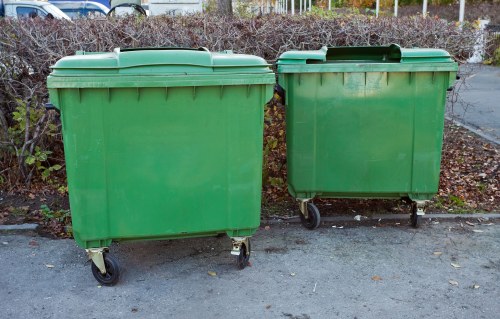Waste Clearance Chinatown: Efficient and Eco-friendly Solutions
Waste clearance in Chinatown is an essential service that has grown increasingly important over the years. In bustling urban centers like Chinatown, managing waste is not just about cleanliness; it reflects community spirit, environmental responsibility, and public health. Our article delves deep into the systems and strategies used for waste clearance in this iconic area.
Chinatown, with its vibrant streets and dense population, faces unique challenges in urban waste clearance. From the disposal of everyday household rubbish to the removal of construction debris, executing a thorough waste management plan is crucial for urban safety and aesthetics.
This article explains how waste clearance efforts merge efficiency and eco-friendly practices. It explores strategies, community involvement, and modern techniques with a blend of seriousness and empathy to ensure that every reader understands the importance of a clean urban environment.

Understanding the Scope of Waste Clearance in Chinatown
Waste clearance in Chinatown involves multiple layers of operations that include regular street cleaning, demolition debris removal, recycling, and proper disposal of hazardous materials. Each element of the process is designed to minimize disruption to the community and reduce environmental impact.
Urban waste management in this area is a collaborative effort between the local authorities, private contractors, and community organizations. Their united goal is to maintain not only a hygienic environment but also an attractive urban landscape that residents and visitors alike can enjoy.
Implementing these procedures requires a well-coordinated schedule. Teams are deployed, and technological aids—such as advanced tracking systems and sorting facilities—are utilized to ensure that waste is collected promptly and processed responsibly.

Modern Techniques and Eco-friendly Practices
Modern waste clearance strategies in Chinatown are guided by environmentally-friendly principles. Many companies have shifted their focus to techniques that not only clear waste but also reclaim and recycle materials. This shift towards sustainability has had a positive impact on reducing landfill use.
Advanced equipment and specialized teams work together to manage demolition waste, construction by-products, and everyday trash. The outcome is a cleaner environment that promises fewer health risks and improved community aesthetics.

Large-scale Waste Removal Operations in Urban Areas
An efficient waste clearance system is essential for the smooth functioning of any busy urban area. In Chinatown, operations are meticulously planned, factoring in the high density of residents, narrow streets, and continuous urban activities.
Waste removal crews are experts in handling various types of waste—from construction debris to everyday refuse. They ensure that bulky items such as old furniture or old appliances are removed safely, preventing any obstruction on the busy streets.
The systematic removal process involves advanced scheduling and the use of high-tech equipment. Through the use of GPS tracking and routing software, waste trucks are able to navigate the busiest alleys with ease, ensuring timely pickups and minimal disruption.

Community Involvement and Educational Programs
Community participation is a cornerstone of successful waste clearance initiatives. In Chinatown, local organizations play an active role in educating residents about waste segregation and recycling practices. Through workshops and community events, they emphasize how proper waste management can improve quality of life.
Educational programs target both the young and the old. Schools, local community centers, and neighborhood meetings help promote habits that reduce waste generation and encourage recycling. Such initiatives build a culture of responsibility and respect for the urban environment.
Local leaders often partner with waste management experts to spread awareness. They showcase the latest technology and innovations in waste clearance, including the use of biodegradable bags and smart recycling bins strategically placed around the neighborhood.

Key Components of Waste Clearance Systems
Effective waste management is a multifaceted task that involves planning, technology, and dedication. The key components that ensure efficient waste clearance in Chinatown include scheduling, sorting, disposal, and recycling. These steps are interlinked to provide a sustainable solution.
Scheduling: Timely collection helps prevent waste accumulation. The scheduling systems use route optimization to ensure that all parts of Chinatown are serviced efficiently without causing traffic disruptions.
Sorting and Disposal: Before waste can be disposed of or recycled, it is sorted meticulously. This involves separating recyclable materials from hazardous substances to protect the environment.

The Role of Technology in Urban Waste Management
The rapid integration of technology has transformed the intricacies of urban waste management. In Chinatown, waste clearance is managed with innovative systems that boost operational efficiency.
Technological advancements like GPS tracking and automated sorting machines play a significant role in modern waste clearance. These technologies keep operations transparent and ensure that waste is processed in the most effective way possible.
The adoption of digital tools helps in monitoring the adherence to waste collection schedules and reduces any delays. As a result, the overall service quality is enhanced, and the environmental impact is minimized.

Eco-friendly Waste Practices: Recycling and Reuse
Recycling forms a major part of waste clearance in urban areas like Chinatown. With an increasing environmental consciousness, initiatives that focus on recycling help transform waste into reusable materials.
Revenue can be generated from selling recyclable materials, which then funds further improvements to the waste clearance system. These practices meet both environmental and economic objectives, creating a positive ripple effect throughout the community.

Training and Safety Measures for Waste Management Crews
A safe working environment is paramount in any waste clearance initiative. Crews in Chinatown receive comprehensive training to handle waste safely, especially hazardous or heavy materials.
Safety measures include the use of protective gear, proper handling techniques, and emergency response protocols. These measures protect workers and ensure that operations are conducted without incidents.

Economic Impact of Effective Waste Clearance
Efficient waste clearance has a multifaceted economic impact on communities. In Chinatown, clean streets and public spaces attract businesses, tourists, and new residents.
The local economy benefits from reduced downtime in public spaces and more attractive urban centers. Businesses flourish in an environment that is both safe and appealing, contributing to a higher quality of life for residents.
Investments in waste management technology often yield long-term benefits. Job creation in recycling, maintenance, and logistical management fosters a base for sustainable economic growth in Chinatown.

Comparing Waste Clearance Strategies: Past and Present
In the past, waste clearance in Chinatown was a more rudimentary process. Manual collection and less efficient logistics were standard, which often resulted in delays and incomplete services.
However, with technological advancements and better planning, modern strategies now offer quicker, safer, and more environmentally friendly waste removal services. Today, efficient scheduling and digital monitoring have reshaped urban cleanliness initiatives.
Historical challenges have paved the way for innovations in waste clearance. Lessons learned have driven improvements that are now evident in the consistently cleaner streets and healthy neighborhoods of Chinatown.

Environmental Benefits of Waste Clearance
One of the clearest benefits of an efficient waste clearance system is the positive impact on the environment. Cleaner streets reduce air pollution and improve water quality by preventing contaminants from entering water bodies.
Regular waste clearance has also led to a decrease in urban infestations by pests and rodents. This contributes to healthier living conditions and a reduction in community-spread diseases.
Environmental sustainability is further enhanced by recycling initiatives, which reduce the need for new raw materials and conserve energy. These benefits are not merely theoretical—they translate into tangible improvements in urban life.

Steps Toward a Zero-Waste Future in Urban Settings
Many cities, inspired by the success in Chinatown, are now exploring the possibilities of a zero-waste future. Although achieving this goal will take time, every step counts toward reducing the overall environmental footprint.
Efforts in waste reduction include encouraging the use of reusable items and strict monitoring of waste generation. Every citizen has an active role to play in this transformation.

Local Relevance: Nearby Areas to Chinatown
The influence of effective waste clearance extends far beyond the boundaries of Chinatown. The surrounding neighborhoods benefit from these streamlined operations, which maintain cleanliness across a wide urban area.
Here are some of the closest areas to Chinatown that experience the ripple effects of diligent waste clearance services:
- Financial District: Known for its high-rise buildings and bustling business environment, this area experiences prompt waste removal to manage its significant daily output.
- Tribeca: With its artistic vibe and mixed-use buildings, Tribeca benefits greatly from structured waste clearance, which complements its upscale urban living.
- SoHo: Famous for its shopping and creative community, SoHo enjoys an effective waste removal system that preserves its aesthetic appeal.
- Lower East Side: A vibrant neighborhood with an eclectic mix of residents, this area sees efficient cleaning routines that keep its narrow streets free of clutter.
- Nolita: Known for its small streets and boutique stores, Nolita relies on waste management that supports both residential and commercial interests.
- Little Italy: With its rich cultural heritage, Little Italy is characterized by narrow alleys and historic facades, calling for careful handling of demolition debris and regular waste disposal.
- Union Square: As a major public gathering spot, Union Square requires constant cleaning efforts to keep the surrounding environment immaculate.
- Greenwich Village: A cultural hub famous for its artistic history, this neighborhood repurposes waste into community projects.
- East Village: A dynamic neighborhood with a mix of residential and entertainment venues, efficient waste clearance helps sustain its lively atmosphere.
- Murray Hill: Known for its office buildings and residential areas, this neighborhood benefits from regular waste collection services that ensure its streets remain clean.
- Midtown: With its high-traffic areas and commercial centers, Midtown experiences significant waste clearance efforts to keep public spaces inviting.
- Upper East Side: A blend of residential comfort and upscale shops, this area sees daily coordinated waste management that supports a high standard of urban living.
Each of these neighborhoods benefits from the superior waste clearance systems deployed in Chinatown. Not only do these practices help in maintaining a clean look, but they also enhance the overall quality of life for residents and visitors alike.

Challenges and Future Directions in Waste Management
Despite the many advances, waste clearance in Chinatown is not without challenges. High population density, unexpected surges in waste production, and the increasing variety of materials that need proper disposal are factors that complicate the process.
Waste management companies must continue to innovate while addressing issues like illegal dumping and the safe disposal of hazardous substances. The use of real-time monitoring and smart sensors is becoming more prevalent in tackling these obstacles.
Future directions for waste clearance include expanding recycling centers, investing in cutting-edge equipment, and fostering a stronger relationship between community organizations and management firms. Continuous improvements in these areas promise a cleaner, safer urban setting in the years to come.

Building a Sustainable Future Together
The journey towards a sustainable, zero-waste city is a collaborative effort that involves everyone—from government officials to everyday citizens. In Chinatown, each person plays a significant role in reducing waste and ensuring a better future for the community.
Community leaders and local businesses are setting exemplary standards by adopting eco-friendly practices. Their efforts include using environmentally responsible products and initiating local programs that encourage waste minimization.
Collectively, these actions contribute to an urban ecosystem that is not only clean, but also resilient and forward-thinking. The strategies implemented in Chinatown serve as a useful model for other urban centers across the globe, demonstrating that comprehensive waste clearance is both achievable and essential.

Final Thoughts on Waste Clearance in Chinatown
Waste clearance in Chinatown is more than just a service; it is a commitment to public health, environmental sustainability, and urban beauty. As the city continues its journey towards cleaner streets and greener practices, every stakeholder has a role to play.
While challenges exist, the progress made so far highlights the potential for future advancements in waste management. By adopting modern techniques, prioritizing eco-friendly practices, and involving the community, Chinatown sets an inspiring example for urban centers worldwide.
Everyone, from residents to local businesses, is encouraged to participate in this ongoing effort. With mutual respect and cooperation, the collective goal of a spotless, sustainable urban environment is well within reach.

Frequently Asked Questions
- Q: What exactly is waste clearance in Chinatown?
A: It involves the systematic removal of household waste, demolition debris, and recyclable materials using eco-friendly and technologically advanced methods. - Q: How does technology aid waste management in urban areas?
A: Modern tools like GPS tracking, automated sorting machines, and digital scheduling systems enhance efficiency, ensuring timely waste collection and environmentally responsible disposal. - Q: Are there any community programs for waste reduction in Chinatown?
A: Yes, local organizations and educational programs actively engage residents in recycling initiatives, waste segregation workshops, and community clean-up drives. - Q: How are hazardous wastes handled in Chinatown?
A: Specialized procedures and trained personnel manage hazardous substances with strict safety protocols to ensure safe handling and proper disposal. - Q: What benefits do neighboring areas receive from Chinatown's waste clearance efforts?
A: Nearby neighborhoods enjoy cleaner streets, reduced pollution, and an overall enhanced quality of life due to the spillover benefits of organized waste management.
